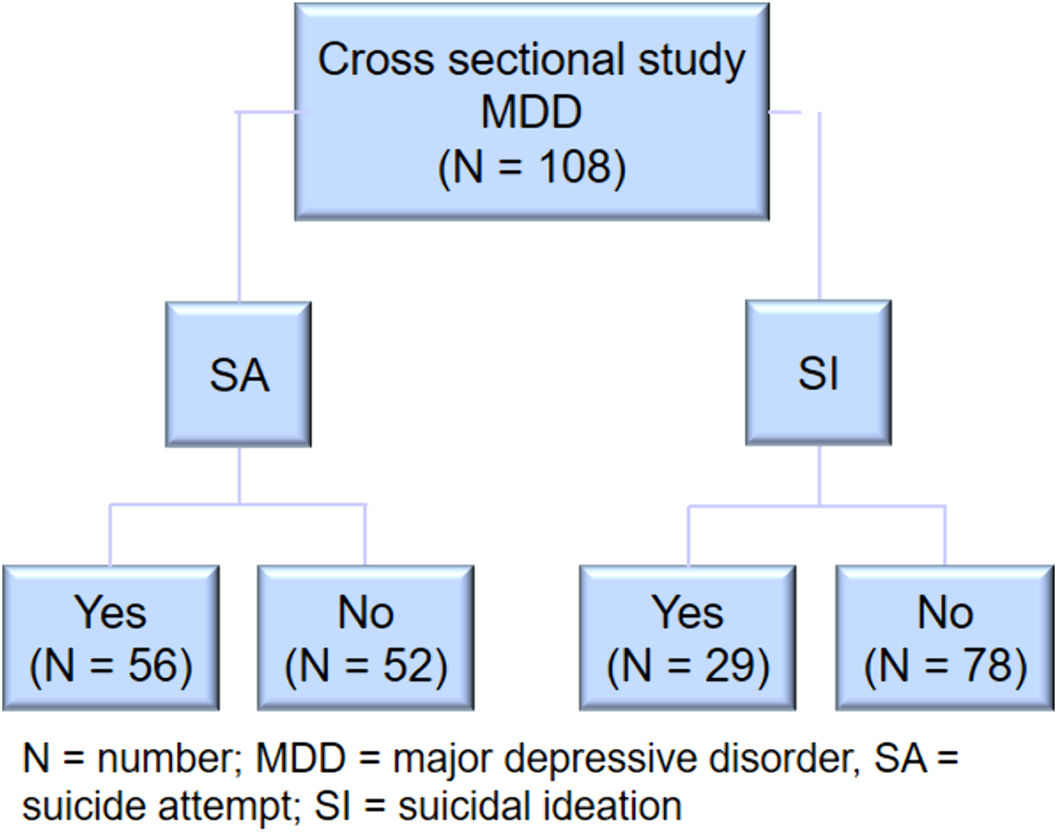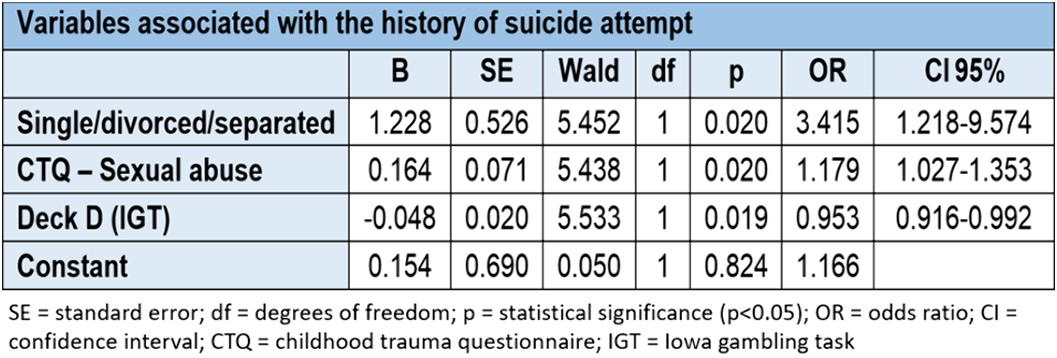26 results
Mega-analysis of association between obesity and cortical morphology in bipolar disorders: ENIGMA study in 2832 participants
-
- Journal:
- Psychological Medicine / Volume 53 / Issue 14 / October 2023
- Published online by Cambridge University Press:
- 27 February 2023, pp. 6743-6753
-
- Article
-
- You have access
- Open access
- HTML
- Export citation
Square roots of weighted shifts of multiplicity two
- Part of
-
- Journal:
- Canadian Mathematical Bulletin / Volume 66 / Issue 3 / September 2023
- Published online by Cambridge University Press:
- 23 December 2022, pp. 791-807
- Print publication:
- September 2023
-
- Article
-
- You have access
- Open access
- HTML
- Export citation
Association between the Prime Diet Quality Score and depressive symptoms in a Mediterranean population with metabolic syndrome. Cross-sectional and 2-year follow-up assessment from PREDIMED-PLUS study
-
- Journal:
- British Journal of Nutrition / Volume 128 / Issue 6 / 28 September 2022
- Published online by Cambridge University Press:
- 29 October 2021, pp. 1170-1179
- Print publication:
- 28 September 2022
-
- Article
-
- You have access
- HTML
- Export citation
The mediating role of impulsivity in the relationship between suicidal behaviour and early traumatic experiences in depressed subjects
-
- Journal:
- European Psychiatry / Volume 64 / Issue S1 / April 2021
- Published online by Cambridge University Press:
- 13 August 2021, p. S583
-
- Article
-
- You have access
- Open access
- Export citation
Association of traumatic events in childhood, impulsivity and decision-making with previous suicide attempt and/or current suicidal ideation in adult patients with major depressive disorder
-
- Journal:
- European Psychiatry / Volume 64 / Issue S1 / April 2021
- Published online by Cambridge University Press:
- 13 August 2021, pp. S177-S178
-
- Article
-
- You have access
- Open access
- Export citation
The polarization constant of finite dimensional complex spaces is one
- Part of
-
- Journal:
- Mathematical Proceedings of the Cambridge Philosophical Society / Volume 172 / Issue 1 / January 2022
- Published online by Cambridge University Press:
- 04 March 2021, pp. 105-123
- Print publication:
- January 2022
-
- Article
- Export citation
Bridging the gap between research, policy, and practice: Lessons learned from academic-public partnerships in the CTSA network – CORRIGENDUM
-
- Journal:
- Journal of Clinical and Translational Science / Volume 4 / Issue 4 / August 2020
- Published online by Cambridge University Press:
- 06 July 2020, p. 372
-
- Article
-
- You have access
- Open access
- HTML
- Export citation
Bridging the gap between research, policy, and practice: Lessons learned from academic–public partnerships in the CTSA network
-
- Journal:
- Journal of Clinical and Translational Science / Volume 4 / Issue 3 / June 2020
- Published online by Cambridge University Press:
- 10 March 2020, pp. 201-208
-
- Article
-
- You have access
- Open access
- HTML
- Export citation
Neutrophil-to-lymphocyte ratio: A potential new peripheral biomarker of suicidal behavior
-
- Journal:
- European Psychiatry / Volume 63 / Issue 1 / 2020
- Published online by Cambridge University Press:
- 17 February 2020, e14
-
- Article
-
- You have access
- Open access
- HTML
- Export citation
Why interindividual variation in response to consumption of plant food bioactives matters for future personalised nutrition
- Part of
-
- Journal:
- Proceedings of the Nutrition Society / Volume 79 / Issue 2 / May 2020
- Published online by Cambridge University Press:
- 04 February 2020, pp. 225-235
-
- Article
-
- You have access
- HTML
- Export citation
Endoscopic reconstruction of large anterior skull base defects with opening of the sellar diaphragm. Experience at a tertiary level university hospital
-
- Journal:
- The Journal of Laryngology & Otology / Volume 133 / Issue 10 / October 2019
- Published online by Cambridge University Press:
- 09 September 2019, pp. 889-894
- Print publication:
- October 2019
-
- Article
- Export citation
Preparation and Intercalation of Fluorescein in a Reconstructed Zinc/Aluminum Layer Double Hydroxide (LDH)
-
- Journal:
- MRS Advances / Volume 2 / Issue 61 / 2017
- Published online by Cambridge University Press:
- 21 November 2017, pp. 3805-3813
- Print publication:
- 2017
-
- Article
- Export citation
Patterns of Emotion Attribution are Affected in Patients with Schizophrenia
-
- Journal:
- The Spanish Journal of Psychology / Volume 18 / 2015
- Published online by Cambridge University Press:
- 10 August 2015, E59
-
- Article
- Export citation
Contributors
-
-
- Book:
- The Cambridge Prehistory of the Bronze and Iron Age Mediterranean
- Published online:
- 18 December 2014
- Print publication:
- 12 January 2015, pp xiii-xvi
-
- Chapter
- Export citation
Low X-ray background measurements at the Underground Canfranc Laboratory
-
- Journal:
- European Astronomical Society Publications Series / Volume 53 / 2012
- Published online by Cambridge University Press:
- 15 February 2012, pp. 155-163
- Print publication:
- 2012
-
- Article
- Export citation
Status of R&D on Micromegas for Rare Event Searches : The T-REX project
-
- Journal:
- European Astronomical Society Publications Series / Volume 53 / 2012
- Published online by Cambridge University Press:
- 15 February 2012, pp. 147-154
- Print publication:
- 2012
-
- Article
- Export citation
SiGe Nanowires Grown by LPCVD: Morphological and Structural Analysis
-
- Journal:
- MRS Online Proceedings Library Archive / Volume 1258 / 2010
- Published online by Cambridge University Press:
- 01 February 2011, 1258-P05-05
- Print publication:
- 2010
-
- Article
- Export citation
A case report of schizophrenia and HIV: HAART in association with clozapine
-
- Journal:
- Journal of Psychiatric Intensive Care / Volume 5 / Issue 1 / June 2009
- Published online by Cambridge University Press:
- 01 June 2009, pp. 47-49
- Print publication:
- June 2009
-
- Article
- Export citation
Nanostructures with Group IV Nanocrystals Obtained by LPCVD and Thermal Annealing of SiGeO Layers
-
- Journal:
- MRS Online Proceedings Library Archive / Volume 1066 / 2008
- Published online by Cambridge University Press:
- 01 February 2011, 1066-A07-02
- Print publication:
- 2008
-
- Article
- Export citation
















